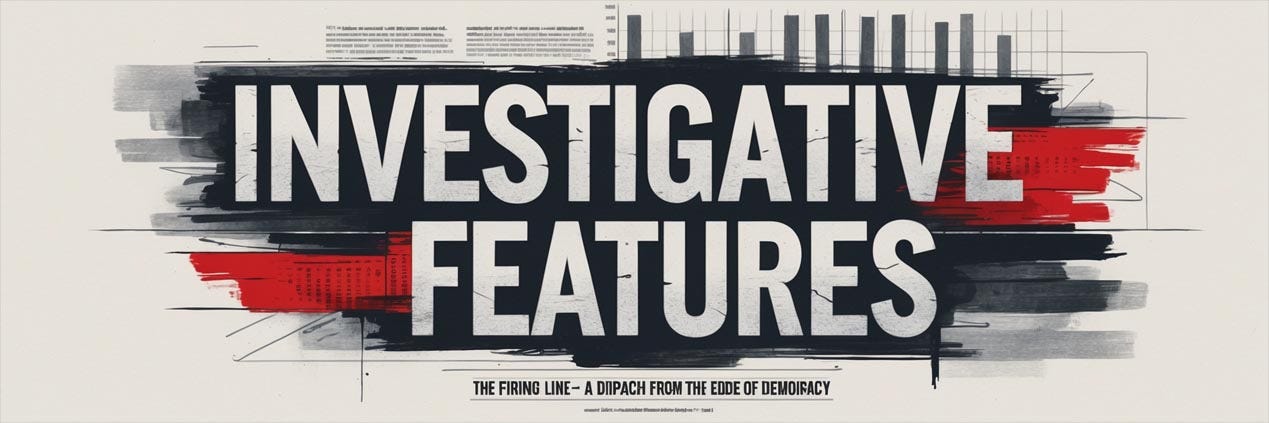Patents Over Patients: The Hidden Crisis of Drug and Medical Device Monopolies in the US and Beyond
How Patent Thickets and Evergreening Fuel Price Gouging, Block Innovation, and Leave Millions Without Affordable Care—And What We Must Do to Fix It
Imagine a world where life-saving treatments are invented—but only the wealthy can afford them. This is not a dystopian future—it’s happening right now, as patent abuse creates a new kind of cartel: one that profits from patents, not patients.
The U.S. healthcare system is at a crossroads. While breakthroughs in pharmaceuticals, medical devices, and prosthetics promise transformative care, a shadow looms: the systematic prioritization of patents over patient access. From life-saving drugs to vision-restoring ocular implants, industries are leveraging intellectual property (IP) laws to monopolize markets, inflate prices, and delay competition, often at the expense of public health. This editorial examines how patent strategies across sectors create a modern-day "drug cartel," explores the human and economic costs, and questions who gets left behind in this profit-driven race.
Patent Thickets and Evergreening: Global vs. U.S. Dynamics
The practice of patent thicketing—layering dozens of patents on a single drug- is most pronounced in the U.S., where the top 12 drugs average 71 patents each, granting ~38 years of monopoly protection. Internationally, companies often replicate these strategies but face varying success due to differing patent laws:
Humira: AbbVie has secured 165 U.S. patents and more than 50 in Europe. However, biosimilars, which are not identical but show no clinically meaningful differences from the original, were launched earlier in the EU due to stricter patent scrutiny, resulting in an 80% reduction in prices.
Insulin: Sanofi’s Lantus holds 49 U.S. patents but only 22 in India, where compulsory licensing threats forced price cuts.
Why U.S. Prices Are Higher:
Unregulated Pricing: Unlike OECD nations that negotiate drug prices, U.S. law prohibits Medicare from engaging in bulk negotiations, allowing manufacturers to set prices three to five times higher.
Patent Litigation Costs: Generic manufacturers spend $2–$10 million per lawsuit to challenge frivolous patents, thereby deterring competition.
Revenue Protection vs. R&D Reality
Post-Exclusivity Revenue Drops: Biologics like Humira experience a 74% revenue plunge within three years of biosimilar entry, due to the loss of monopoly pricing power.
R&D Underinvestment: Pharma reinvests just 11–25% of revenue in R&D, while allocating 31% to marketing and 25% to stock buybacks. For example, Pfizer spent $8.7 billion on buybacks in 2023—double its oncology R&D budget.
Future Trends in Drug Development
AI-Driven Patent Surge: 66% of IP experts predict AI will automate patent drafting, but training data ownership disputes (e.g., who owns AI-generated molecule patents?) may exclude low-income researchers.
Biologic Dominance: By 2035, biologics will comprise 35% of the global drug market. Without biosimilar competition, treatments for diseases like lupus could cost over $100,000 per year.
Medical Devices: Ocular Implants and the Innovation-Access Divide
Ocular implants exemplify how patents stifle progress in medical technology. While advancements like 3D-printed AI-designed prosthetics and drug-eluting implants promise to treat conditions like glaucoma and diabetic retinopathy, patent strategies prioritize market control over accessibility:
Patent stacking: Over 50% of ocular implant patents are minor iterations of existing designs, creating legal barriers for competitors.
Market consolidation: Four companies control 70% of the $13.6 billion ocular implant market, limiting price competition despite rising demand.
Drug-eluting implants are medical devices coated with time-release medications (e.g., anti-inflammatory drugs for ocular implants). Key issues:
Price Inflation: Advanced intraocular lenses (IOLs) cost $2,500–$4,000 per eye due to patent-protected materials like hydrophobic acrylic.
Adoption Delays: Bioactive corneal implants approved by the FDA in 2022 remain inaccessible until 2030 due to patent litigation between Alcon and Johnson & Johnson.
Future Projections:
Smart Implants: AI-enabled glaucoma monitors (e.g., Sensimed’s Triggerfish) may raise costs by 30% due to licensing fees for embedded algorithms.
Biomaterial Monopolies: Graphene-based retinal implants, patented by NanoRetina, could block affordable alternatives in India and Nigeria despite lower manufacturing costs.
Prosthetics: Where IP Meets Human Mobility
Prosthetic technology has seen remarkable advances—from brain-controlled limbs to sensory feedback systems. Yet IP protections often prioritize commercial gain over affordability:
LUKE Arm: DEKA Integrated Solutions Corp (DEKA)’s prosthetic, funded by National Institutes of Health (NIH) grants, uses foot sensors for grip control but costs $100,000 due to 120+ patents on its hydraulic systems.
Targeted Muscle Reinnervation (TMR): This surgery, patented by the University of Vienna, reroutes nerves to improve prosthetic control but is available only at 15 U.S. hospitals, primarily serving insured patients.
Trade-Offs:
Exoskeletons: ReWalk’s $85,000 device faces 50% abandonment rates due to Medicare’s $35,000 reimbursement cap.
3D Printing: Open-source prosthetics (e.g., e-NABLE’s designs) cost $500 but face lawsuits from Össur over alleged patent infringements on socket designs.
Neuroprosthetic Risks: Neuralink’s brain-chip interface, projected to dominate patents by 2030, could centralize control of neurotech, prioritizing profit over accessibility
The Road Ahead:
Neuroprosthetics: Brain-chip interfaces (e.g., Neuralink) are expected to dominate patents by 2030, potentially creating monopolies over life-altering technology.
Regulatory gaps: The FDA’s 510(k) pathway allows patent holders to fast-track similar devices, reducing incentives for breakthrough designs.
The Human Toll: Who Pays the Price?
Marginalized Communities:
Uninsured Populations: 23 million Americans ration medications; 40% of diabetic amputees delay prosthetic care due to costs.
Racial Disparities: Black glaucoma patients are 3x more likely to lose vision due to delayed intraocular lens (IOL) access. Latino communities face 50% higher amputation rates from diabetes than white patients.
Global Inequities:
Humira: Priced at $84,000/year in the U.S. vs. $2,500 in Europe.
Prosthetic Access: 90% of amputees in low-income nations lack modern prosthetics vs. 15% in wealthy countries
Affording the Future: Solutions or Stopgaps?
Patent System Overhaul:
End Evergreening: Limit secondary patents to 5 years post-approval and ban "method of use" claims (e.g., adjusting dosage forms).
Compulsory Licensing: Adopt South Africa’s HIV model, allowing generics during public health crises.
Price Regulation:
OECD Reference Pricing: Align U.S. drug prices with the OECD average, saving $72 billion per year.
Non-Profit Production: California’s CalRx sells insulin at $30/vial, undercutting Sanofi’s $99/vial Lantus.
Equity-Driven Innovation:
Patent Waivers: Expand the WHO’s COVID-19 Technology Access Pool (C-TAP) to cover prosthetics and implants.
Community-Led R&D: Fund trials for sickle cell therapies, leveraging CRISPR without enforcing patents in sub-Saharan Africa
The So What? Why This Matters
By 2035, unchecked patent abuse could:
25 million Americans ration medications annually.
$610 billion wasted on monopolized drugs/devices.
3-year life expectancy gap between high- and low-income populations.
Who Should Care?
Policymakers: Use march-in rights (Bayh-Dole Act) to break monopolies on taxpayer-funded inventions.
Providers: Reject industry kickbacks; prioritize generic prescriptions (e.g., 90% generic dispensing rate at Mayo Clinic).
Patients: Join advocacy groups like Patients for Affordable Drugs to demand transparency in patent filings and pricing.
Advocacy in Action:
PAO Partnerships: Novartis collaborated with SMA advocates to secure Medicaid coverage for Zolgensma.
Grassroots Campaigns: The “Insulin for All” movement pressured Eli Lilly to cap insulin at $35/month.
As Dr. Reshma Ramachandran (Yale School of Medicine) notes: “When patents become barriers, we must choose humanity over monopolies.” The stakes are not just economic—they’re a matter of survival.
The time for reform is now.
Sources
1. https://www.politico.com/sponsored/2024/12/the-connection-between-patents-and-high-drug-prices/
3. https://accessiblemeds.org/resources/blog/pharmaceutical-patent-abuse-infinity-and-beyond/
4. https://scholarship.law.uc.edu/cgi/viewcontent.cgi?article=1029&context=ipclj
6. https://lup.lub.lu.se/luur/download?fileOId=3955220&func=downloadFile&recordOId=3955219
7. https://www.dennemeyer.com/ip-blog/news/ip-trends-in-the-pharmaceutical-industry/
9. https://pmc.ncbi.nlm.nih.gov/articles/PMC8891695/
10. https://www.factmr.com/report/ocular-implants-market
11. https://www.numberanalytics.com/blog/innovative-medical-device-trends
14. https://www.complisolutions.com/post/role-of-medical-device-patents
16. https://healthequitycollaborative.org/innovation-a-key-to-advancing-health-equity/
17. https://www.allhealthpolicy.org/events/5162019-publicwebinar
18. https://www.politico.com/sponsored/2025/05/fueling-innovation-and-affordability-in-health-care/
19. https://www.drugpatentwatch.com/blog/benefits-of-drug-patent-licensing-agreements/






Yes greed but what I would like to know is who paid for their research etc. for any of those items effected. Think u will find the taxpayers! They don’t spend their own money.
Simple answer: greed. These bastards won't live long enough to spend all the $$$ they make from your suffering.